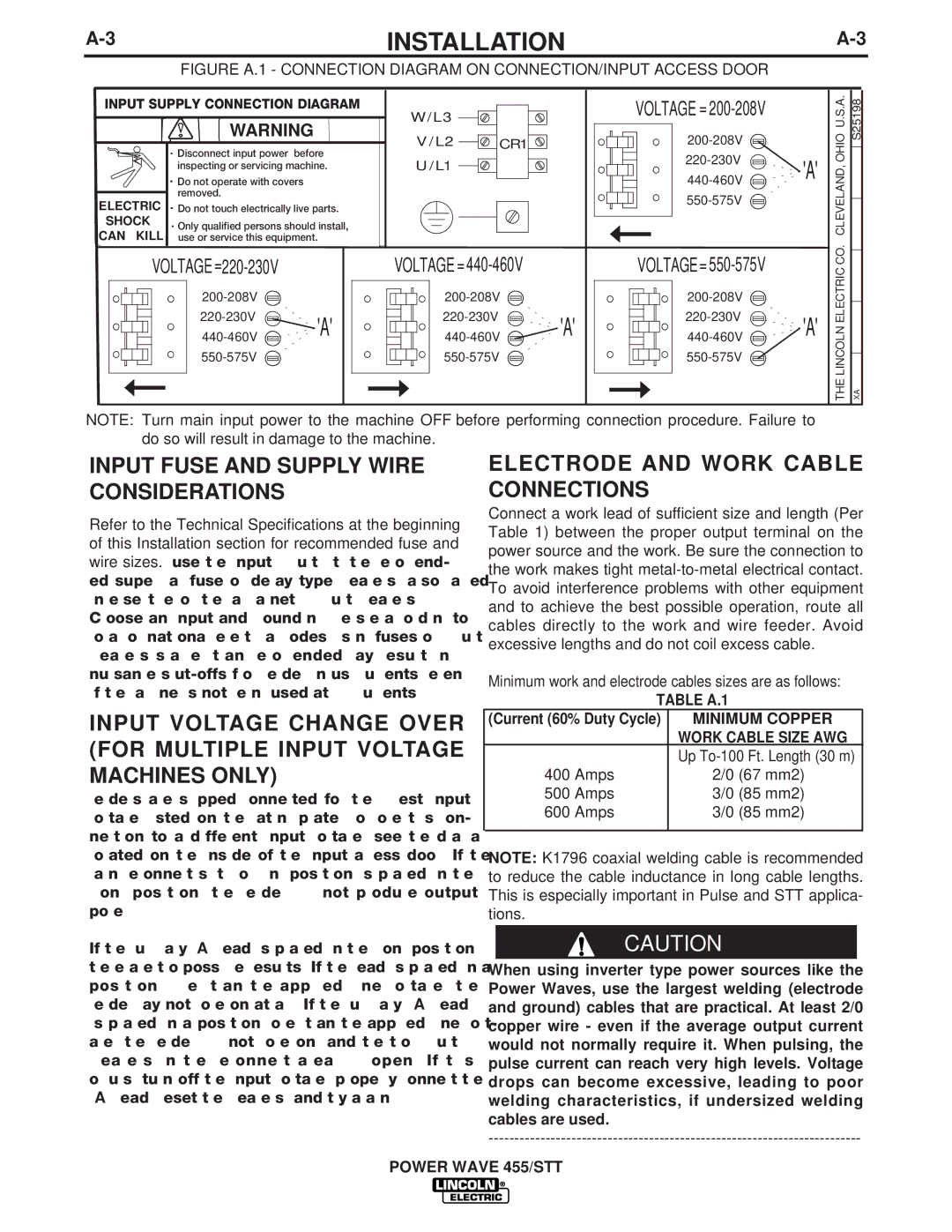IM716 specifications
The Lincoln Electric IM716 is a state-of-the-art multi-process welding machine that stands out in the industry for its versatility and advanced technology. Designed for professionals who seek efficiency and precision, the IM716 is capable of handling various welding processes, including MIG, TIG, and Stick welding, making it an excellent option for a wide range of applications, from automotive repairs to heavy industrial work.One of the key features of the IM716 is its intuitive interface, which includes a digital display that simplifies the settings adjustments. Users can easily select the desired welding mode, adjust the voltage and wire feed speed, and monitor their performance all from a user-friendly control panel. This ease of use significantly reduces setup time, allowing welders to focus more on the task at hand than on navigating complicated controls.
The IM716 employs Lincoln Electric's advanced inverter technology, which provides greater energy efficiency compared to traditional transformer-based machines. This innovative technology not only reduces power consumption but also contributes to a more consistent arc quality. The inverter design also makes the machine lighter and more portable, accommodating the needs of welders who move between job sites.
Another notable characteristic of the IM716 is its robust construction. Designed for durability, the machine can withstand the rigors of a demanding work environment. It features a rugged steel housing that protects internal components from damage while enhancing its longevity. Additionally, the IM716 operates reliably in various conditions, including extreme temperatures, making it a dependable choice for outdoor welding projects.
The IM716 is equipped with advanced safety features, including a thermal overload protection system that prevents overheating during intense welding tasks. This feature extends the lifespan of the machine and ensures safe operation for users. Furthermore, the IM716 includes features like a built-in gas solenoid valve for TIG welding, providing added convenience by enabling automatic gas flow control.
In conclusion, the Lincoln Electric IM716 is a powerful, versatile, and well-engineered welding machine that meets the needs of professional welders. With its multi-process capabilities, user-friendly interface, advanced inverter technology, and durable construction, it exemplifies innovation in the welding industry. Whether for fabricating, repairing, or maintenance tasks, the IM716 stands out as a reliable and efficient choice for any welding operation.

